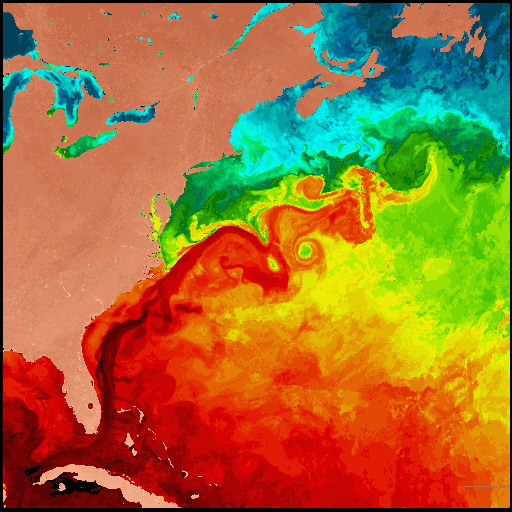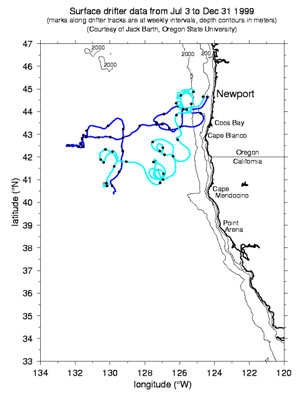
Sea Surface Temperatures (SST)

| Atmospheric and Oceanic Circulation |  |
|||
| Oceanic circulation greatly influences climate, which affects us all. The atmosphere and ocean work together to absorb heat and redistribute it from one part of the globe to another. Otherwise, the tropics would get hotter and hotter, and the polar regions would get colder and colder. The ocean circulates by surface currents that are driven mainly by the wind, and by deep currents that are driven mainly by density contrasts in the water produced by temperature and salinity variations. Because the wind drives surface currents, we must also look at how the atmosphere circulates. In this lab we will primarily investigate evidence of surface currents. Because of the large scale of oceanic currents, observations from satellites are often used to study their characteristics and variations. | ||||
| Gulf Stream Current | ||||
|
Sea Surface Temperatures (SST) |
||||
 |
||||
| This chart shows tracks of drifters released into the Pacific Ocean in July 1999 off Newport Oregon. The black line is the coastline of Oregon and California. These tracks are marked with dots at weekly time periods through December 1999. | ||||